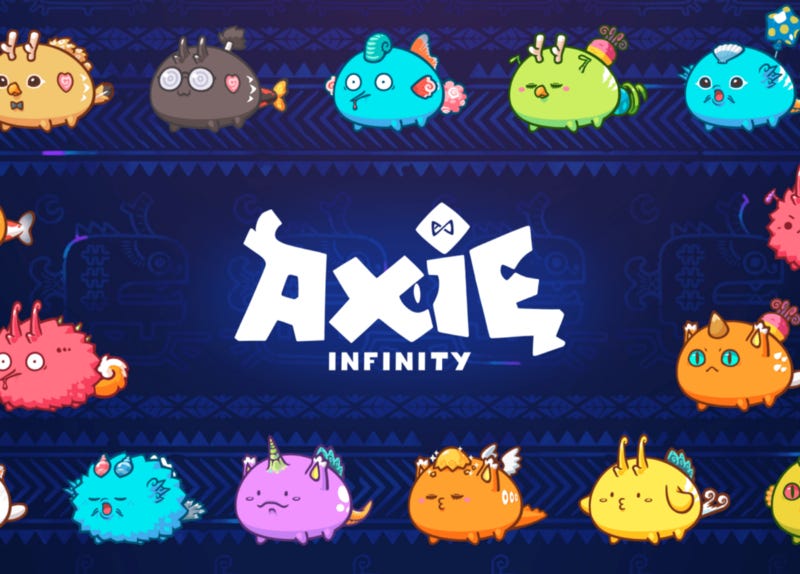An uncomplicated blockchain gaming framework

Before I begin, let me clarify the point of this article: I’m going to talk about GameFi at a high level and present a framework of how I’ve started to think about blockchain games. I will not go over the can of eldritch worms known as tokenomics.
So let’s talk about GameFi.
Before P2E, people spent time on games because they wanted to be entertained. A small proportion of players transitioned to making a living as a streamer or professional esports player, but the average person couldn’t generate any real money from playing video games
Enter blockchain gaming, especially P2E gaming, led in recent media coverage by games like Axie Infinity. For those of us that aren’t as familiar with the game, the game revolves around digital pets called Axies that you can use to battle, breed, and explore. If you’re familiar at all with Pokemon, it’s very reminiscent of that.
Each new Play-to-Earn Game includes a layer of earning potential to its games, with slight variations game to game. Now, you too can be rewarded for each fetch quest you do, each slime you kill, and every hour you spend in-game!
Before we get ahead of ourselves, let’s hold on a second.
If you’ve played some, you will quickly realize these are simple games. Oftentimes they’re a grindfest where you repeat a core game loop over and over again to generate earnings which you can then convert to cash in your wallet.
Small definitional aside: gameplay loops are core actions you repeat in a game. It’s what every game will boil down to. In a game like Minecraft it may look like “block exists -> player sees block -> player mines block -> player receives rewards,” and in a massive multiplayer online role-playing game (MMORPG) like World of Warcraft it may look like “player enters area -> player collects quests -> player completes quests -> player receives rewards.”
But this is a game. It sounds pretty boring. Where’s the fun?
Where’s the fun? is a question I’ve found myself coming back to over and over when reviewing these blockchain games. It’s a simple question but it exposes a core tension, and a resulting give-and-take, between fun and cash-generative.
Why does this tension exist? My thesis is that if players are focused on entertainment, their goal would be to maximize entertainment value per time spent. Conversely, players focused on earning would maximize income per time spent — with an implied higher willingness to do activities that lower entertainment value per time spent in exchange for income.
Here’s a breakdown from somebody with a non-econ background:
Oftentimes games have a fixed cap on tokens. The more people play, the more people are competing for payouts from this fixed pool.
How are payouts determined? It depends, but we can assume some sort of free market dynamic where people will be willing to pay others to do an activity for them.
Zooming in, per activity you will have a pool of people competing in that activity for a cut of the payout. Let’s call the average payout per person per activity the payout rate.
There will be differences in the payout rate between activities and so gains-seeking players will go to those activities to optimize their payout.
In the long run, entertainment-focused players would be much more likely to pay others to do activities for them that they view as “boring,” and earning-focused players would do them because that is where the supply of income potential is. Examples of these activities include gathering resources, retrieving a rare item, and crafting unique assets.
But hold on a second. This is just somebody paying somebody else to do something that they wouldn’t do on their own… this sounds like a job.
And it is!
Can a job be fun?
In the future of blockchain gaming? Yes. It needs to be. Kind of. At least relative to other options.
Fun is, first and foremost, a relative term. And because different people attach different values of fun to different activities, we can use this to our advantage! Or at least try to. I think the main ways to take advantage of this difference falls into two overall categories:
Quantity: Provide a ton of different simple gameplay loops (if you can even define them as such) for people to enjoy, so that people can have multiple revenue opportunities. This will appeal to a broader group of potential players that have diverse interests.
Quality: Make the core game really fun. Continuously update the game and ensure that content is always engaging so the floor of “fun” is always increasing. This will keep the players coming back over and over, not just for money but to have a good time.
Is there a “better” category? In a competitive sense, quantity provides appeal to a broader group of potential players so you can attract more people with diverse interests. Quality on the other hand provides the depth that keeps players engaged for the “fun” value.
And we’ve made it to the framework! I assess games along these two axes of quantity and quality.
Primarily quantity-focused games have generally been “games” that are DeFi with a pretty gaming skin. One example of a quantity-focused game is DeFi Kingdoms which has many ways for players to engage in DeFi but… there really isn’t much gameplay there. The retention is based on the earning potential and other DeFi-related dynamics.
Quality-focused games generally have less of a focus on earning and more on a core gameplay loop. These are probably what you would think about when you think of a “game” game — traditional gaming examples include League of Legends, and one could argue that in blockchain gaming, early Axie Infinity was more game-focused and less DeFi focused.
The way to win now is to have both quantity and quality. We’ve seen this already in games like Axie Infinity that have moved into DeFi and created an entire ecosystem to facilitate it. Upcoming games are touting multiple revenue-generating opportunities and roles to attract a diverse player base, with quality of the gameplay being a given.
However , while, moving into quantity and quality helps strengthen the competitive viability and long-term potential of blockchain games, it also exposes them to the risks and considerations of each of these categories.
For instance:
Quantity-focused games, which we have noted are often DeFi-heavy, need to chase where the users are because the strategy is heavily dependent on broad outreach (i.e. top-of-funnel focused). This is why you often see DeFi games like DeFi Kingdoms moving cross-chain to tap into where users, such as yield farmers, are concentrating.
Quality-focused games, which we have noted are often centered around a core game loop, need to continue innovating so people do not lose interest and the gameplay stays fresh. However, because this involves moving the status of the game forward it becomes a continuous push-and-pull of balancing, rebalancing, and maintaining the progress of power creep with the needs and demands of the player community.
So while you diversify your risk and can start to beef the game up by making it both quantity- and quality-focused, you need to diversify your capabilities to be able to address the related risks. If you are able to manage the risks properly, you’ll see your player numbers go up and retention and engagement metrics go up.
Why is this framework useful? It’s because web3 is first and foremost about the value to the community, especially to your most dedicated members. What convinces them to stay in your community? Is it purely driven by the fact you print money for them or is it because it’s so fun that they will spend hours of their day in it? Or… is it somewhere in between?







